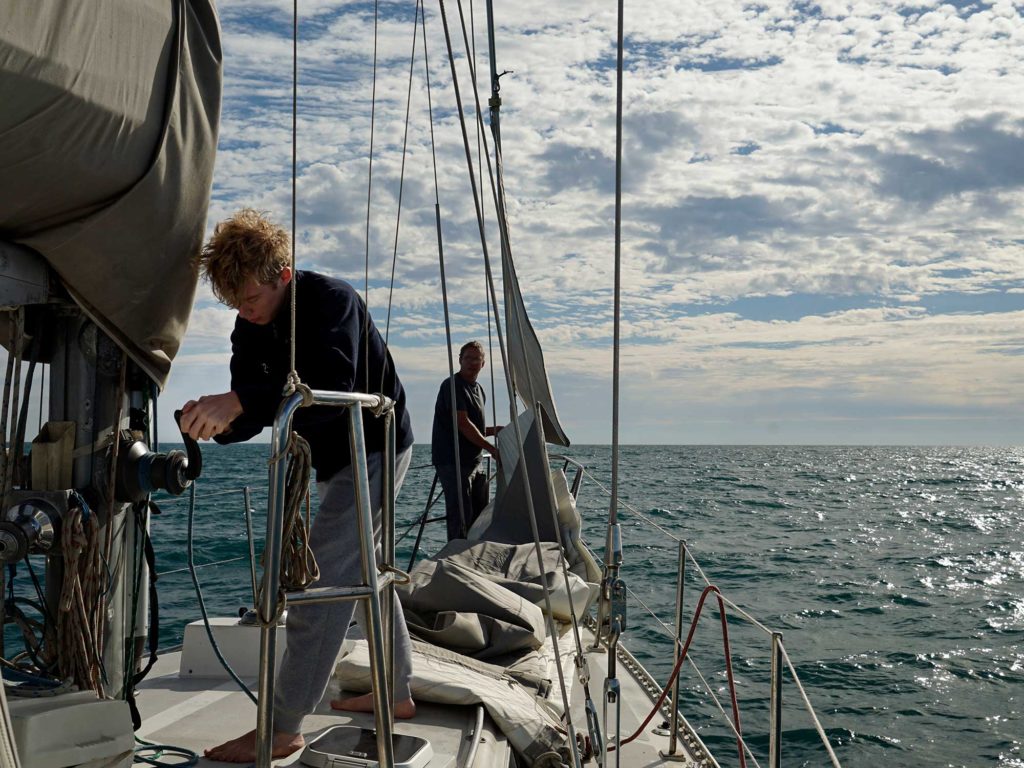
Engines are the boisterous beasts that sailors love to hate. We’ve known purists who pulled the noisemakers out; later they mostly pulled out their hair. Overwhelmingly sailors determine that this dependable power is essential, even if we officially refer to engines as “auxiliary.” Ours has put good service in, but this thrum from the heart of the boat is giving us heartburn at the moment.
Our 2020 was headed towards a high note in late December. With the whole family on board, we departed Puerto Peñasco on December 22 between strong northerly wind events. Jamie refers to it as the splash-and-dash. Possibly, it wasn’t a kind wakeup to our Yanmar.
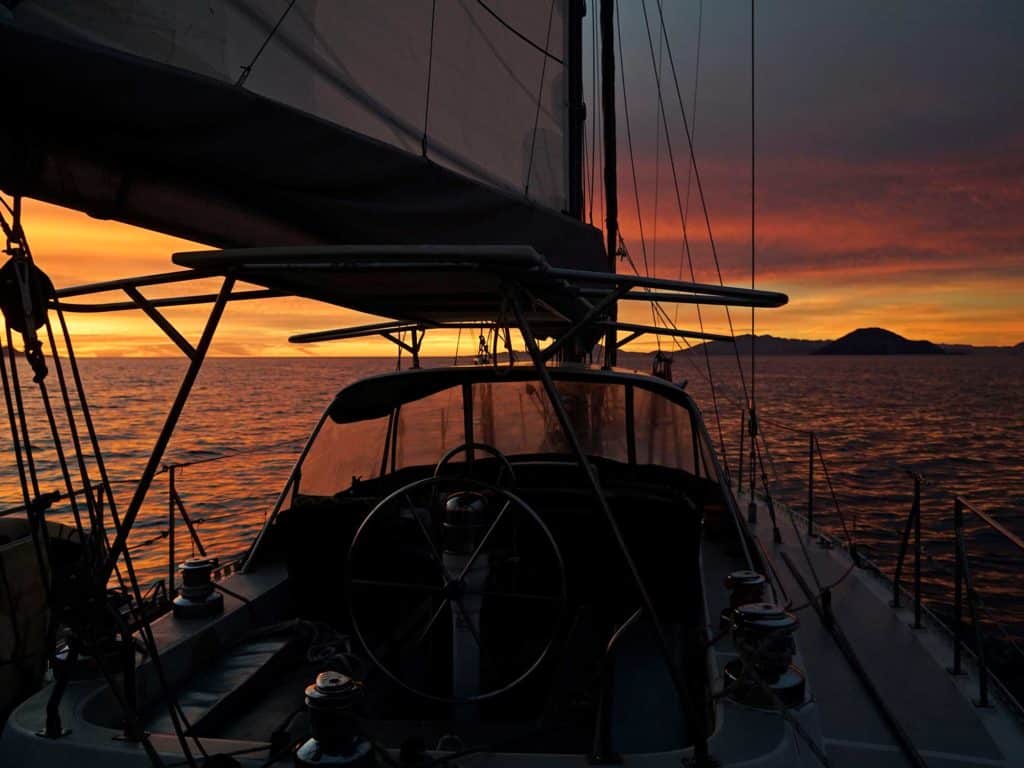
The first leg was an overnight sail (odd how transits are typically referred to as a sail, even though we motored or motor-sailed almost the entire distance) to Puerto Don Juan, where we waited out a three-day blow and celebrated Christmas.
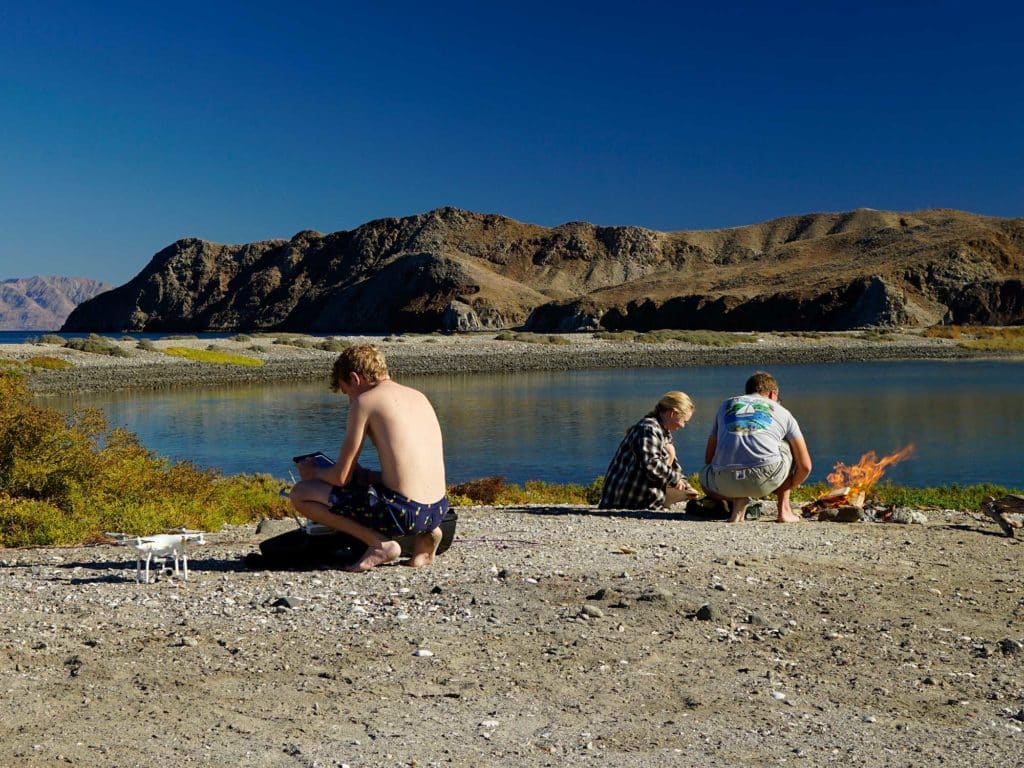
The next leg south was to Santa Rosalia; we left the first day possible. To be clear, we aren’t fans of cruising the Sea of Cortez in the wintertime. It is cold, and the opportunity isn’t so much to “cruise” as to “scoot between safe harbors when it’s not blowing stink.”
Getting south wasn’t just to get warm: it was in the hope our permits for passes to the awesome Revillagigedo islands would come through, and get there ASAP. Also called the Socorros, these islands 350 nm south of Cabo are a marine preserve biosphere of spectacular underwater life. Sharks – lots of sharks! Giant manta rays. Schools of pelagic fish (no fishing, that’s OK – we like to watch). Whales of the piscine and mammal species. How utterly awesome it would be to experience this as a family!
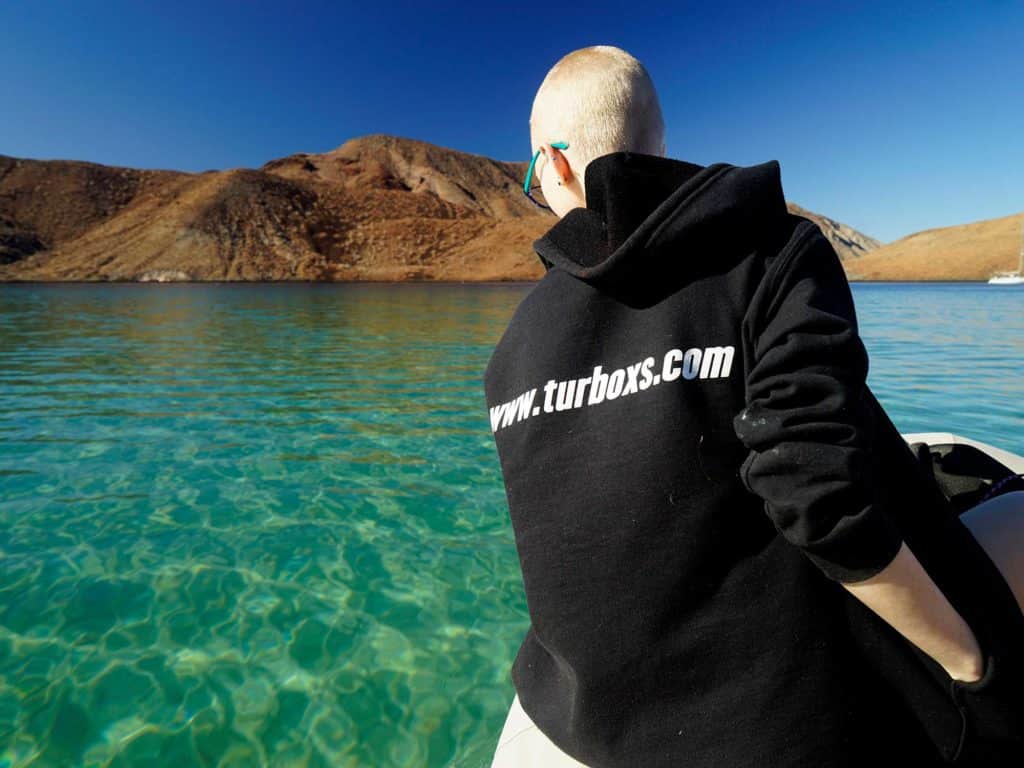
Arriving in Santa Rosalia in the wee hours of the morning, we anchored to wait for light to enter the harbor. In internet range again, we learned that our permits came through. The island would JUST fit into a detour from Baja to get Niall to his flight from Puerto Vallarta back to school, mid-January. Next weather window we’d continue to La Paz, hook up with friends there, and buddy boat to the Revs.
Jamie continues the tale from here.
First Signs of Engine Trouble
Just before hauling the anchor, I checked the engine and noticed the coolant expansion tank was weirdly dark. Removing it, I found it looked like the inside of a holding tank. Thumb-sized lumps of shiny oil floated in coolant stained dark from the ingress.
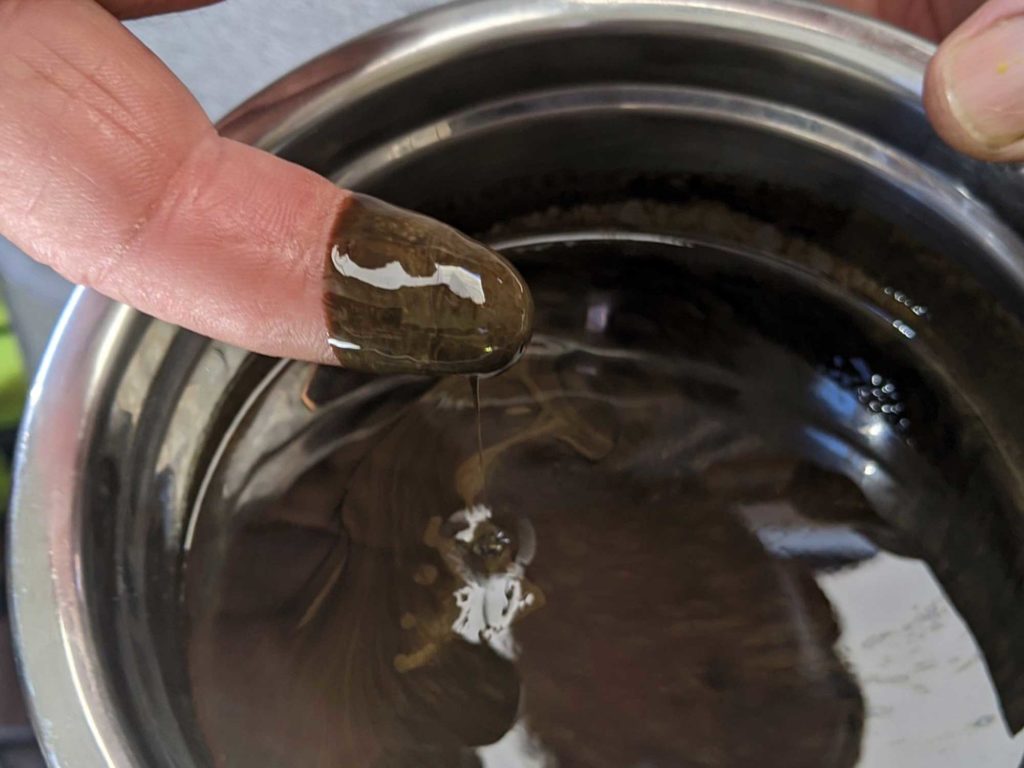
And the story goes:
- Engine type – Yanmar 4JH3-TE
- Engine hours – 8,313
- Engine status – questionable
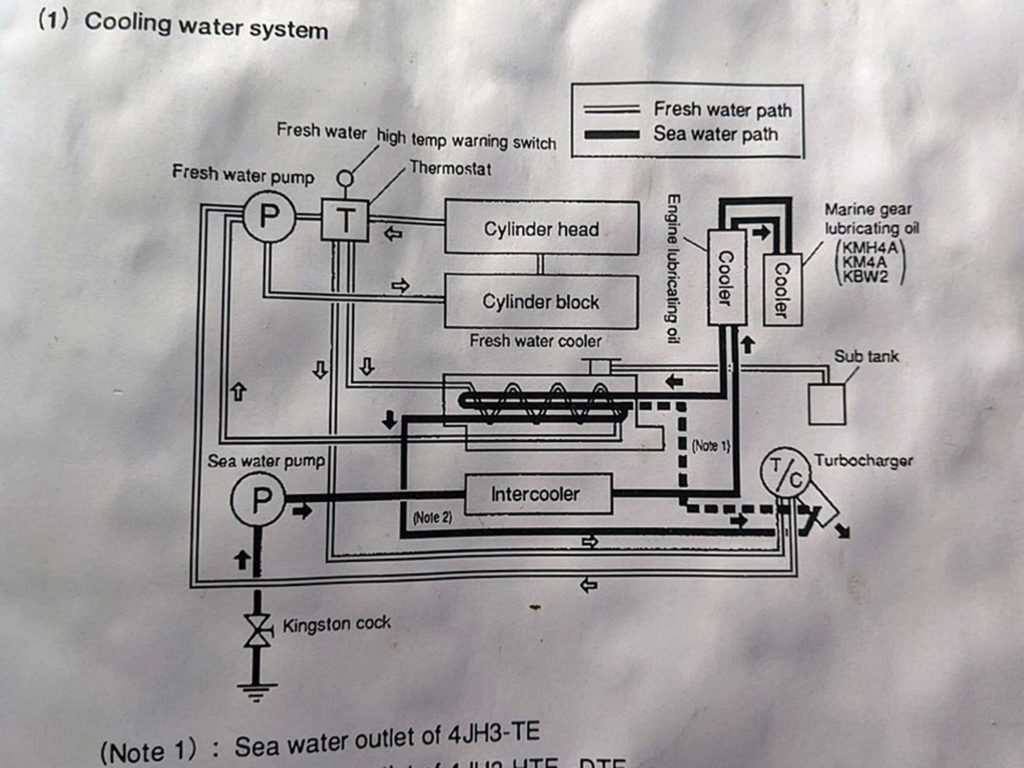
Prior Cooling System Issues
Almost exactly a year ago, we experienced mild overheating while running the engine at anchor to make hot water. It may have been from snot-like little brown globs found in the coolant, which could have restricted flow sufficiently to cause a problem. With two diesel mechanics, all possible causes were removed and checked. The contamination source was never found. The freshwater cooling system was drained/ cleaned/ flushed (many times!)/ refilled, the engine worked normally for the rest of 2020. Even in a lower-mileage year, there were plenty of opportunities to put it to work in the often windless Sea of Cortez!
Sitting outside Santa Rosalia a year later, the ambiguity as gone. Clearly, there was a lot of oil in the coolant. The engine oil dipstick came up clean: no signs that coolant/freshwater contaminated the oil.
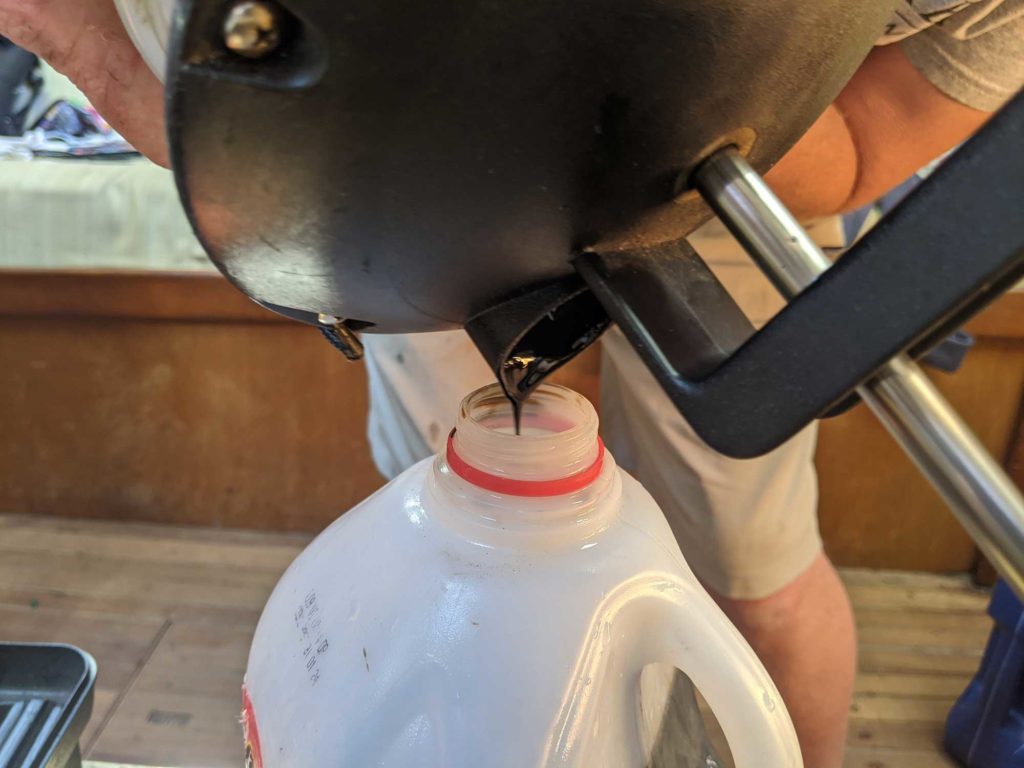
Testing Theories for Diagnosis
We took a berth at the marina to assess, and take next steps:
- Drained coolant and flushed six times with fresh water, the first two with a little dish soap to break down the oil inside.
- Ran the engine to circulate water during flushing. This did not introduce oil into the coolant again, but it was only low RPMs at the dock. However, the freshwater cooling loop pressurized enough to push water up into the coolant expansion tank, overflowing it until the engine was off and cooled.
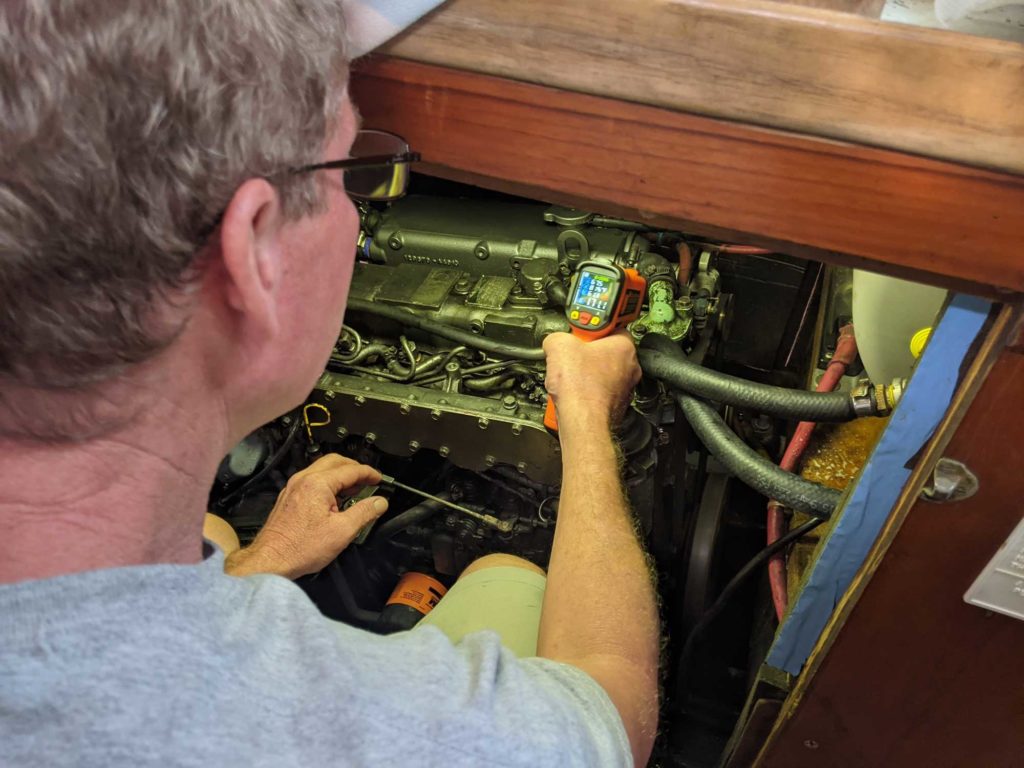
Probable Cause: Head Gasket
By consensus of many and our own assessment, the cause has to be either a head gasket or cracked turbo – with gasket the almost certain culprit. It’s not the oil coolers (seawater cooled), or heat exchanger, etc.
RELATED: Sailboat Engine Replacement Options
It was a low few days of processing the possibilities, and considering the next steps. We had a lot of input from a lot of folks (you know who you are: thank you, especially Diesel Don, Salvador, and the LeLivres). The painfully cute foster boatyard kitten updates Jason sent through somehow came at just the right moments when a little lift was helpful.
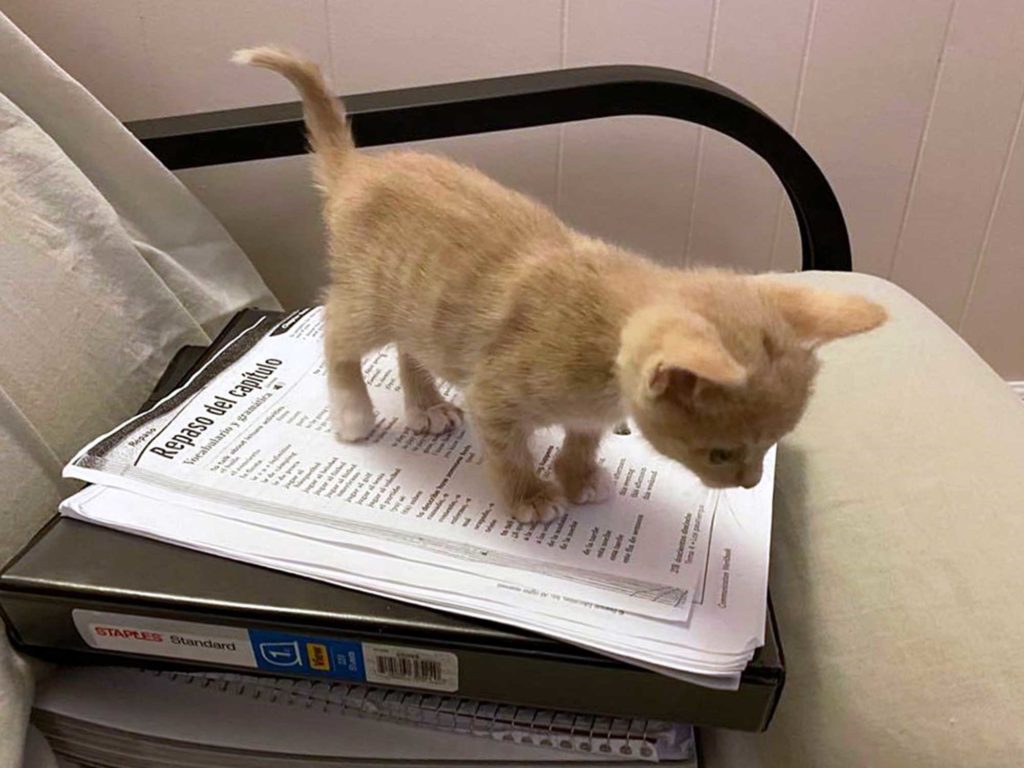
Cruising is about letting go of fixed plans, and taking life one day at a time. It’s still hard to let go of missing the Revillagigedos. Our permit, secured in 2020, is just for this month. We’re told by park officials that the permit fees are jumping (no, skyrocketing! To the tune of hundreds of dollars per day for our family) for applications in 2021, so this might have been our only shot – I sure hope not. And we could wallow in that, and maybe I did a little; it was not great birthday news.
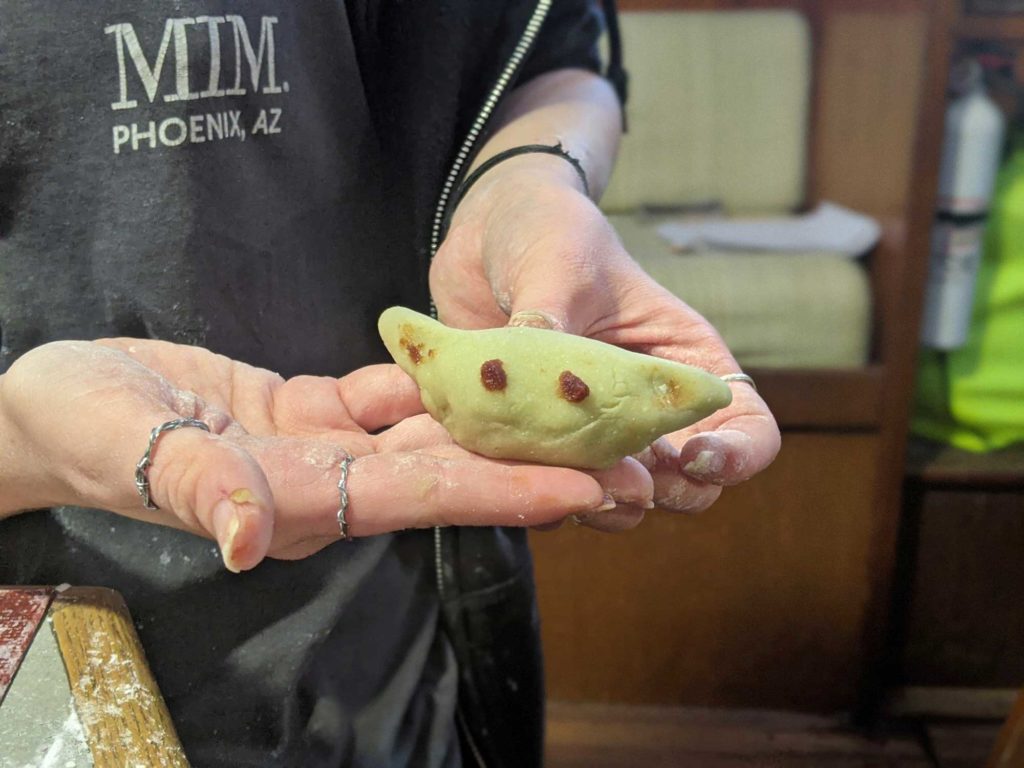
Now What?
At 8,313 hours, though diligently maintained/serviced we’ve decided that the engine needs thorough assessment. We need to identify the cause AND be certain that repairing it gains us a reliable engine for coral-strewn islands in remote corners of the Pacific.
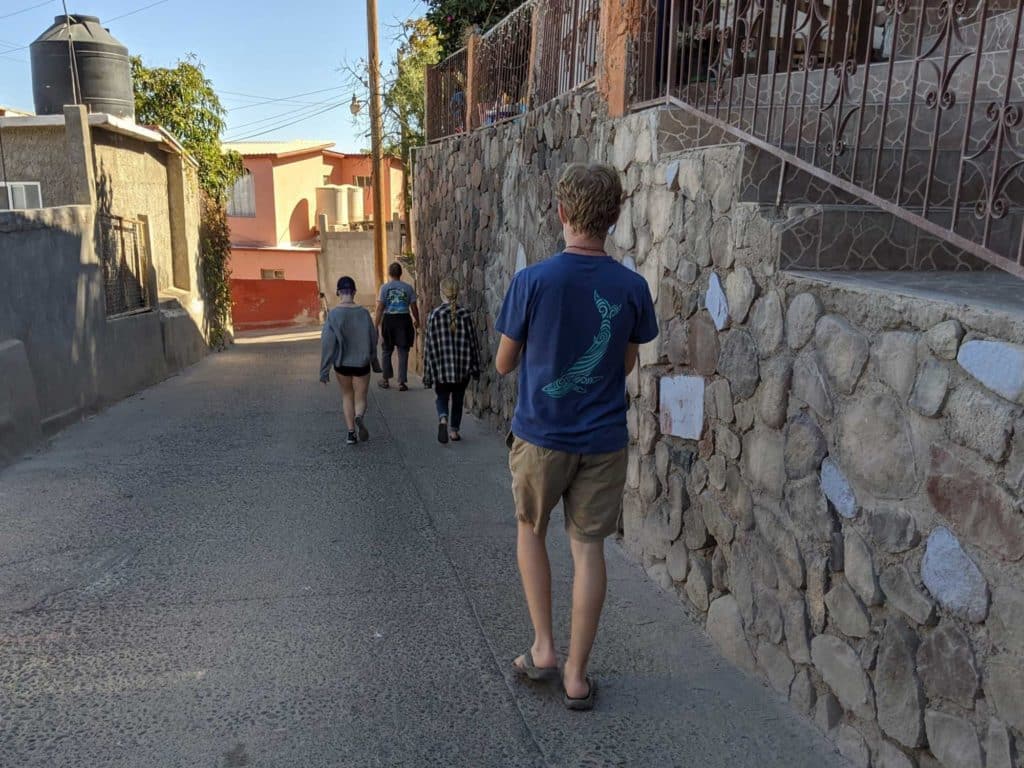
There aren’t resources here in Santa Rosalia for a compression test. Nor is it the place to remove and resurface the head – open heart surgery for engines, as one friend put it – if we found it warped and causing the leak. Our current plan is to migrate between anchorages in range of Santa Rosalia for a month or so; the harbor offers relief from Northers, and eventually milder weather will enable a hop back to Puerto Peñasco. There we’ll probably remove the engine and get it somewhere for assessment – whether the outcome is a simple head gasket and general service or, gulp, shopping for a new engine. Well, it was going to be a slow year anyway!

This month we have an article coming out with 48°North about what wears out on a boat after extended cruising: ironically, it references our so-called iron genny as a major piece of gear that is still in service! Hopefully, we’ll have an addressable issue that means there are still a few thousand hours of service ahead. And if not, well, cruisers plans are always written in the sand at low tide, and we’ll write a new plan again.








